Uber business is one of the twenty-first century’s most significant inventions that has simplified individuals’ movements across busy cities. Although the entry of Uber Technologies into the transport industry has destabilized the relationships between the firms and taxi drivers, its operational strategy has resulted in many nations’ economic growth. Start-up corporations dominate the competitive business environments today based on the choices of such industries to focus on a single production or service line. Besides, start-up businesses are smaller and less structured; as a result, the agility of operating such entities is higher compared to other multinational operators. Uber is one such organization that adopts the characteristics of start-up companies; therefore, Geradin (2017) urges readers to understand its operational schemes, leadership charts, and a brief history concerning its inception into the market. The analysis report on Uber Technologies incorporates the evaluation of its marketing strategy, tactical plan, and growth engine in the realization of the economic indicators influencing the running and management of the start-up organization.
Uber’s Tactical Plan
The success of any business depends on the tactical plans laid down by investors or business founders at the beginning of operations. Geradin (2017) highlighted that most profitable institutions organize meetings before initiating any business activity to identify the tactical layout of such industries. Tactical plans include all the written outlines providing guidelines regarding specific actions an organization is yet to take in addressing challenges or achieving particular goals (Šepeľová et al., 2021). Setting tactical plans within businesses is beneficial in improving organizational performance based on the available information on the weaknesses and strengths of specific departments. Tactical planning is also essential because it allows firms to develop actionable steps towards the realization of periodical goals based on the provisions of an overall strategy in the running of companies (Farris et al.,2017). Uber Technology prioritizes its works and team divisions based on quarterly reports regarding the progress and shortcomings of the implemented tactical plans. As a result, reviewing the company’s SWOT analysis, business visions, value, purpose, and the current realities on the ground helps the managers master the firm’s position in the competitive transport industry.
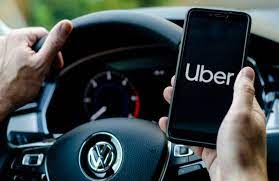
SWOT Analysis
Uber has gained demand for its mobility service based on the convenience of the app in locating riders and passengers. However, the growth rates of employment opportunities at the company also attract a magnitude of people to venturing into the business. Uber business connects the transport industry with the ride-sharing app technology, and as of 2014, the organization was ranked as the highest valued venture-support incorporation in the U.S. Moreover, Uber Technologies provides an efficient and convenient platform for passengers to access and reach their destinations at lower prices than taxis. Therefore, De los Reyes and Scholz (2022) categorize Uber Services as a well-recognized brand with high service standards characterized by highly trained and verified drivers.
Uber also enjoys an unlimited fleet of vehicles for uber Black users, distancing the company from its competitors. Taxis, for example, are controlled by regular Taxi service regulations, which oversee the operations of cars and drivers, a case that misses Uber’s high-tech business. In addition, the cashless system of processes in Uber allows easy transactions between drivers and users; tracking and rating of highly performing drivers can be monitored using the cashless app attached to the operations of such vehicles (De los Reyes & Scholz, 2022). The trust and safety of drivers and users of Uber vehicles adopt the dual rating system, which is more convenient than the manual operation system. Finally, uber has the strength of permitting drivers to work on flexible schemes and timing; thus, the uber business can be a part or full-time business based on the flexibility of services offered by the organization.
Weaknesses
The privacy of customers is minimized with the implementation of the ride-sharing app. The ability of the high-tech service to record the pick-up and drop points locations threatens clients’ privacy. A driver with ill motives can use the data to track or monitor the movement of customers without their concern. The outcomes of such actions can increase violence and robbery in a few instances. Furthermore, the safety of uber drivers is minimized with the systems of operation implemented by the company; an uber driver connects to strangers at different pick-up points without knowledge of what they carry and the intentions of travel. Gunawardena and Jayasena (2020) stressed that Uber is not unique in any manner because the idea can easily be imitated without restrictions of competition. Uber companies earn money from the employed drivers who make the business real; working as a driver for the organization is stressful based on the low wages issued to employees.
Opportunities
First, the high costs of transport charged by Uber competitors open more significant opportunities for customers to depend on their services. Taxi and Lyft drivers leave travelers dissatisfied with the high prices and poor services issued to clients (Geradin, 2017); the long waiting time and traditional booking of taxis are also tiresome leading several customers to lean on uber services. Secondly, Uber’s high-tech can exploit more significant global markets, unlike taxi and other regulated transport industries, especially in regions where taxi services are expensive and inconvenient. The business might have a brighter future of expansion because the company can increase the valuation to appeal to more investors in the market; the organization can have more money to operate with an increased valuation (Mehdi, 2019). The cost of running uber vehicles will reduce with the entry of electric cars into the business; electric cars will increase profit margins for uber drivers and minimize customer costs.
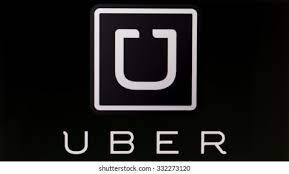
Threats
Regions lacking the type of business overinvest in Uber services following the overvaluation initiated by investors in the transport industry. More investment in uber business might result in fewer profits, affecting not only the organization but also the drivers and other stakeholders engaged in the firm’s running (Gunawardena & Jayasena, 2020). The organization risks developing negative publicity following the low-profit margins earned by drivers; the employees are not happy with the hard work with lower wages and salaries. Research conducted by the regulators of the German transport system indicated that Uber risks ban in the country because it lacks legal regulations crewing its operations (Leal et al., 2018). Finally, Uber risks decreasing its prices following the rapid increase in competition from other mobile service providers worldwide; more drivers might not join the platform with the reduced profits linked to the business.
Business Vision, Purpose, and Value
Uber’s vision is to ignite more opportunities for individuals by setting the world in greater, safer, and more convenient motion. The organization aims to improve the accessibility of places in shorter periods but expedient measures and at relatively affordable prices (Šepeľová et al., 2021). Besides transportation, Uber Technologies focus on exploiting opportunities for people around their environments provided the life process depends on the firm’s core values. The organization aims to set the world in motion by giving reliable and incredible transportation services through a mobile app system (De los Reyes & Scholz, 2022). The company’s mission statement compares Uber’s high-tech transport systems to running water, meaning the corporation’s purpose is to ease transport as a necessity. The core values facilitating the smooth operations at Uber Technologies include doing things right and acting as the owners of the transport system. The organization takes responsibility for all events and acts associated with the transport industry. Besides, Uber builds globally but lives locally to attain its successes; the values link the organization to customer obsession and bold bets to its operations.
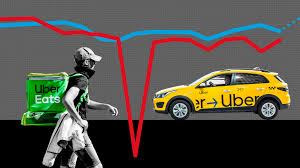
Current Reality and Annual Outcome
Uber Technology was founded in 2009 by Garrett Camp and Travis Kalanick; the company offers couriers, vehicles for hire, freight transport, and package and food delivery services. The high-tech firm earned a revenue of 17.46 billion with an operating income of 3.83 billion in 2021 (Feix, 2021). Uber enjoyed a net gain of 0.5 billion using total assets and equity worth 38.77 billion and 12.27 billion, respectively, in the same year. In the next three to five years, the business might reach all parts of the world based on its flexibility. Electric cars will dominate the transport industry facilitated by Uber based on the increased demands and low payment schemes echoed by drivers. The company’s current financial position is promising because it is expanding its services following the high demands for the transportation system.
Action Plan
Uber is a high-tech company that incorporates the 20/80 rule as an action plan for managing the time and operation of services in the transport system. 80% of the positive results initiated by the uber business originate from the 20% of thinking and planning on improving services. The founders of Uber have employed experienced managers who organize meetings to make decisions on the firm’s challenges. However, the decisions are made after consultations with stakeholders from numerous dimensions.
Golden Circle Rule, OODA LOOP 4 Steps Approach
In my proposition, Uber uses early adopter advocacy, referrals, stunts, loyalty programs, reviews, partnerships, and omni-channel marketing strategies to attain their goals and objectives (Mehdi, 2019). Moreover, the company applies the concepts of the Golden Circle Rule unique proposals to entice users to pay for Uber services. The psychological marketing practices alienate Uber from other transport-oriented business-like like Lyft and Taxi. The Golden Circle Rule applies that customers do not purchase services or products based on what a company does. Instead, users buy why organizations do things (Farris et al., 2017). In the case of Uber, customers depend on the platform because it offers better opportunities for safety and faster motion. Uber uses the 3-false rules of Simon Sinek’s Golden Circle Rule to make language, product and timing the primary marketing strategies. Uber high-tech also implements the OODA LOOP 4 steps approach in observing, orienting, deciding, and acting on marketing issues favoring the wellbeing of users and drivers. Uber’s high-tech business is better in the market than Lyft and taxis; the success of Uber technology leans on its product vision and customer-oriented priorities.
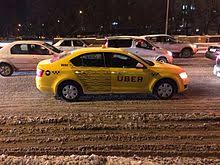
Uber’s Marketing Strategies
The marketing team at Uber incorporates special pricing orders to attract drivers and additional alternatives to appeal to dynamic consumer behaviors. For instance, Feix (2021) suggested that the organization has no service fees for all its customers; the only requirement needed from interested customers is an app that requires clients to sign in for access of services. Furthermore, Uber charges standard rates on its pricing as a marketing strategy; personal and business use are authorized equally for both meals and rides (Farris et al., 2017). Uber also applies the frameworks of mantra-like in the cases of Nike and Starbucks. For instance, Nike uses the Authentic Athletic performance mantra while uber adopt a new mantra, we do the right thing. Period. The mantra is an additional marketing strategy for the business because it portray customer expectations on the role of the organization in the provision of quality services.
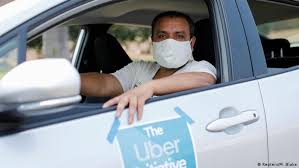
Growth Engine
The dynamic consumer behaviors in Uber are achieved though the adoption of product and service alternatives that appealing. Uber Technologies implement habitual, complex, variety-seeking, dissonance-reducing, and buying behaviors; the four types of buying behaviors makes Uber high-tech clients so dynamic. Uber’s growth engine lies in the unchanging lifestyle of travelers; unlike in the past, people need privacy and certainty of reaching their destinations with fewer struggles. Uber high-tech never changes the smartphone app connecting drivers to users; the app is integrated with Google maps to enhance customers’ monitor the moment of uber drivers. People love privacy and travel in style and comfort, and Uber provides such demands, thereby controlling the transportation market. The organization also gives regular customers free rides during specific business periods to reward loyalists and increase Uber services’ purchasing power.
I believe the organization can incorporate scarcity rule plans and dreams to reduce the company threats and weaknesses. Uber can challenge the taxi industry by creating a scarcity rule for the deployment of IT experts, drivers, and managers. In addition, The IT specialists in Uber can develop cravings to new customers to aid a self-controllable transport system; the objective is to replace the traditional taxi business. Uber can also adopt the scarcity rule to expand its marketing and tactical strategies in the running of its activities.
Conclusion
Uber is a start-up company that has enjoyed a significant following in the transport industry; the organization incorporates productive tactical and marketing strategies to enhance the speed by which the firm attains its growth engines. The ride-sharing app technology distinguishes Uber from Lyft and Taxi; the company’s drivers locate customers through the application after riders search for available vehicles. Uber Technologies has more significant opportunities to expand its operations worldwide; however, the industry risks sinking into losses following the choices of several investors to settle on the business approach.
References
De los Reyes, G., & Scholz, M. (2022). Assessing the legitimacy of corporate political activity: Uber and the quest for responsible innovation. Journal of Business Ethics, 7(2), 156-187. Web.
Farris, P., Yemen, G., Weiler, V., & Ailawadi, K. L. (2017). Uber pricing strategies and marketing communications. SSRN Electronic Journal, 4(2), 108- 147. Web.
Feix, T. (2021). Valuing digital business designs and platforms: An integrated strategic and financial valuation framework. Springer Nature.
Geradin, D. (2017). For a fact-based analysis of Uber’s activities in the EU: Addressing some misconceptions. SSRN Electronic Journal, 7(3), 145. Web.
Gunawardena, T., & Jayasena, K. (2020). Real-time Uber data analysis of popular Uber locations in the Kubernetes environment. 2020 5th International Conference on Information Technology Research (ICITR), 5(2), 87- 107. Web.
Leal, J., George, José, P. F., João, Manuela, P., Maria, Roberto, M. P., Cláudio, & Alexandra, X. (2018). Handbook of research on strategic innovation management for improved competitive advantage. IGI Global.
Mehdi, K.-P., D. B. A. (2019). Breaking down language and cultural barriers through contemporary global marketing strategies. IGI Global
Šepeľová, L., Calhoun, J. R., & Straffhauser-Linzatti, M. (2021). Sharing economy business models: Informational services innovation and disruption in Uber and Airbnb. Studies in Systems, Decision and Control, 521-540. Web.
Shutterstock. (n.d.). Uber royalty-free images [photograph]. Shutterstock Incorporation. Web.
